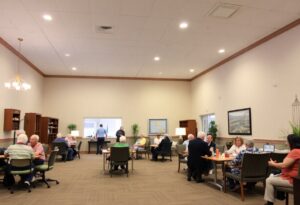This bubble graph was created to help seniors and caregivers understand the different levels of senior living (or senior care) and how they overlap. By plotting each type of care against the increasing level of supervision (or the decreasing level of independence) versus the cost, it can be easy to select the appropriate level of care. Each bubble also includes a short description. If you don’t understand all the terminology used in the senior care world, this pictorial presentation might help.
The overlap between levels of care (bubbles) show some important details. For example, in states like Pennsylvania, Personal Care Homes (PCMs) are a subset of assisted living that are not allowed the operators to dispense medication or help with any financial tasks (like paying the bills). This is key distinction when selecting care. In most of the country, this distinction does not exist so our directory includes PCM as a subset of assisted living. If you are searching for a PCM on this site, you must search for an assisted living option and then check the legal description for the service to see if the service has a legal identity as a PCM or an assisted living facility. If we allowed users to search for PCMs, over 90% of the searches would result in NO results (boo) since PCMs are a local anomaly.
Also notable in the graph is the giant bubble labeled CCRC (Continuum Care Retirement Communities). These communities are growing in popularity for the rich because they provide care in the same community regardless of a senior’s requirements for care. It can be extremely expensive, but it is the ultimate retirement plan for the wealthy. Seniors can live an active social life when they are healthy and they can also still see their friends while staying in a skilled nursing center on the campus.
On the lower end of the costs spectrum is home care. This is typically a supplement to primary caregiver who might work during the day and want someone to check in on “Mom”. These services can cost as little as 15 dollars per hour and provide peace of mind for a primary caregiver. They can also be used for seniors who live alone and need a driver or someone of make sure they are eating, bathing and taking their medicine as needed.
Once you get a grasp of the overall senior living landscape from this infographic, enter your desired location into our search feature. Then use the tabs to narrow your select down to the specific type of care you need.



